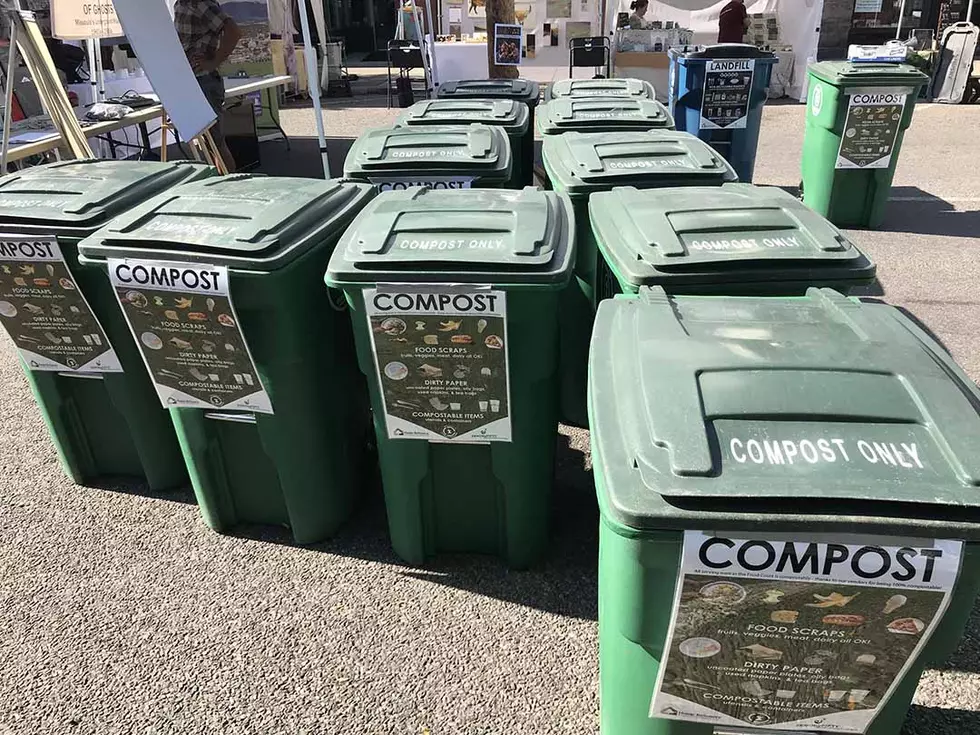
Sustainable Missoula: Food waste, and what you can do about it
Nothing is worse than opening your fridge and getting a whiff of the tell-tale smell of something gone bad. No matter your diligence to only shop from a list and prioritize your leftovers, it never fails: something gets pushed to the back of the fridge and waits there, past its prime, until it is beyond edible.
After locating the source of the offending odor, you pull it from the fridge and then what? Where is the best place for this utterly disgusting item? Spoiler. It's not your trash can.
Every year, wasted food in the United States can be measured in the billions of pounds (133 billion to be exact). Though there are hungry people across the world, we don’t have a food shortage problem. We have a food distribution and waste problem. And the food that does go to the landfill causes another problem by producing methane gas, a leading offender in the greenhouse gas emissions that cause climate change.
Any food that is not eaten by a human or animal is ultimately wasted food. And while we all waste food once in a while, we can take a whole bunch of actions to reduce how much food we waste. Like being more efficient so you reduce the amount of food you buy in the first place (perk: it saves money as well).
Before you head to the store, plan your meals by the week or month, make your shopping list, stick to it, and minimize your trips to the grocery store (perk: pandemic-compatible habit). With your meals planned out, try to cook just enough food for that meal or remember to incorporate your leftovers into your next day’s menu.
Some people don’t care to eat the same meal they just had, but we’ve got you covered: there are thousands of recipes that use leftovers to make a whole new meal.
Imagine you are home making yourself a simple salad. You have some leftover meat and beans for the toppings and you combine it with locally-grown lettuce, carrots and radishes (perks: local food reduces emissions from transportation and supports our local economy) and you settle in for a perfect, climate-friendly meal.
But then you realize you have all these vegetable trimmings. Now is it okay to throw those radish tails and carrot and lettuce ends in the garbage? Nope.
If you have animals nearby like chickens or pigs, they would LOVE to eat some to most of your food scraps (perks: the animals get a variety of fresh nutrients and it saves money on feed). You could also save most vegetable scraps and use them to make a delicious broth, ferment them to create a gut-healthy topping to your next meal, or try one of these intriguing recipes that incorporate the less used portions of food.
Of course, no matter how hard you try, there are some things that just go bad. In that case, you can compost. Missoula is filled with several options for residential pickup services (find them here under the “Recycle” heading) or you can start composting in your backyard. Composting may sound like a stinky project but this 6-minute video covers the simple tricks you need to know to set-up your own simple compost (perk: replenish your soil with your finished product).
And there you have it. Minimal food waste, saving money, and helping reduce your overall climate footprint. For more information on other tips, check Zero by Fifty to learn how to reduce, reuse, repair or recycle almost anything.
Cassidy Green is the Development Manager at Home ReSource. This Sustainable Missoula column is brought to you – via the Missoula Current – every week by Climate Smart Missoula and Home ReSource.
Sustainability Happenings
As COVID-19 has altered many community events, some have moved on-line or found creative outlets. Here we offer ideas about sustainable ways to stay involved in our community. If you like these offerings, consider signing up for Climate Smart’s eNewsletter here. And sign up for Home ReSource’s eNews via their homepage here.
Weekly through September 3. Montana Renewable Energy Association’s Summer Series. Thursdays at 12:30 p.m., join in on virtual lunchtime presentations about renewable energy topics. More details and RSVP here.
August 15-September 30. Bike to Barns farm tour. Join CFAC exploring local farms and flavors on a self-guided 15-mile bike tour through Missoula’s Orchard Homes and Target Range neighborhoods. Register here by September 15.
August 30, 4pm. Native Plant Garden Volunteer Day at Fort Missoula. Help weed, prune shrubs, and thin golden currants, snowberries, and chokecherries. BYO tools and gloves. More info here.
September 10, 4 – 5:30 pm. Decarbonize Your Money: Investments, Banking, Offsets. Hosted by Families for a Livable Climate, this happy hour Zoom panel discussion will focus on how to decarbonize your money from personal investments, and business or organizational investments, to where you bank. And we will dive into the value of (LOCAL) carbon offsets. See more details and sign up to register.
September 12. Spontaneous Construction (SponCon) at Home ReSource. SponCon is a building contest and celebration of reuse in which teams compete to build their greatest creations out of Home ReSource materials. Register online today!
September 13-26. Missoula in Motion’s Commuter Challenge. Create or join your workplace team and log your sustainable trips to win prizes. Yes, working from home counts!
Find more activities and events at Missoulaevents.net and on Montana Environmental Information Center’s Conservation Calendar.
